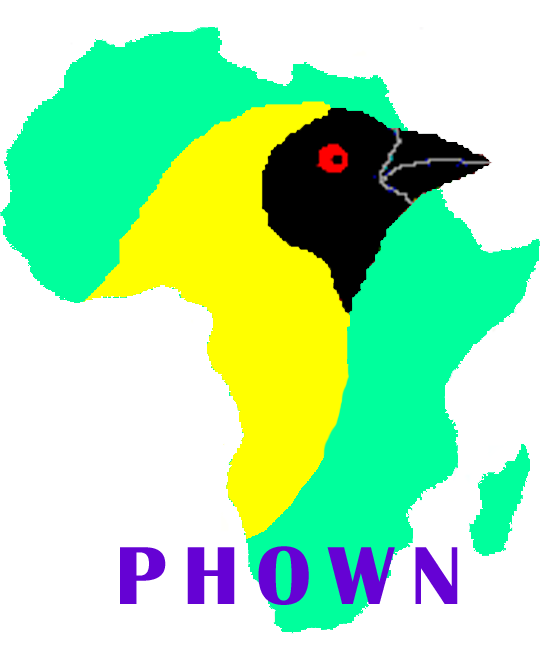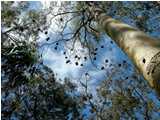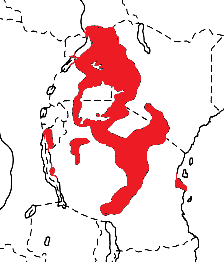Weaver species
Choose different species from drop-down list and press 'Go' button. See Full species list.Golden-backed Weaver Ploceus jacksoni
IUCN: Least concern Discovery: 087Categories: wetland,
News items about species
Discovery
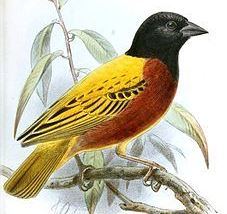
figure from Shelley (1888) 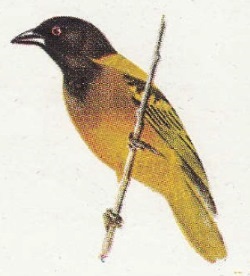
figure from Mackworth (1955) 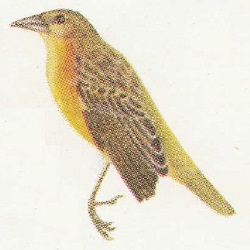
figure from Mackworth (1955) 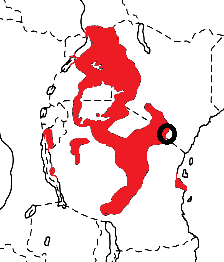
distribution, type locality circled IntroductionThe Golden-backed Weaver was formally described by George Ernest Shelley, an English geologist and ornithologist.The Golden-backed Weaver was collected by Frederick John Jackson, an English administrator, explorer and ornithologist. Jackson arrived in Kenya in December 1884, where he undertook several hunting and collecting trips. In mid 1886 he decided to go to Kilimanjaro for a few months to hunt and collect specimens. While based near Mount Kilimanjaro a new species was brought to him, which was sent to England where Shelley described it as the Golden-backed Weaver. Jackson wrote the following about how he obtained the specimen: "Little credit is due to me for having brought this new species to light, as the specimen was brought to me by a little Taveita boy, tied by the legs along with several others of the common yellow species, and was the only one that I kept, as all the rest had had their tails pulled out." The first illustration of the Golden-backed Weaver was of the male type specimen, published by Shelley (1888). The next illustrations to be published were 6 decades later: colour paintings of the male and female in Mackworth (1955). Scientific citationPloceus jacksoni Shelley 1888, Ibis, 1888, p.293 Kilimanjaro = Taveta, Kenya.Meaning of namesjacksoni, Named after Sir Frederick Jackson (1860-1929) Governor of Uganda, 1911-1917, naturalist, collector, and author.First English nameJackson's Golden-backed Weaver (Shelley 1905).Alternate namesGolden-back Weaver,Jackson's Golden-backed Weaver, Jackson's Weaver, Jackson's Yellow-backed Black-headed Weaver. CollectorFrederick John Jackson.Date collected1887.Locality collectedNear Taveta, Kenya.Type specimensThe type is in the British Museum (BM 1888.6.20.1). |
The above is based on Weaver Wednesday 2, a weekly series about the discovery of each weaver species.
This species text first appeared as
Weaver Wednesday [204] - Discovery [87]: Golden-backed Weaver on 2016-05-11
1. Basic biology
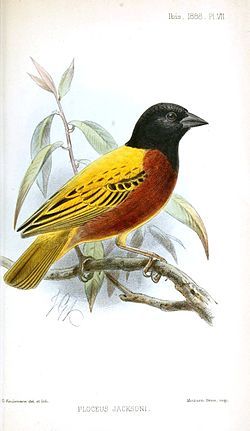
figure from wikipedia The female and non-breeding male Golden-backed Weaver are olive above and yellow below, with a reddish eye. Some interesting photos of these birds in moult may be seen here.
Distribution. The Golden-backed Weaver is found in Uganda, SE Burundi, W Kenya, and in N, E and central Tanzania; it is rare in South Sudan (see map right, based on Birds of Africa). No subspecies are recognised. The Golden-backed Weaver has been introduced to the United Arab Emirates (since 1992), and Singapore (since at least 2011), probably due to escaped cage birds in each country. Habitat. The Golden-backed Weaver inhabits mainly wetland areas like swamp, ambatch, reeds, papyrus, and along rivers, but also moves into acacia scrub and woodland. It shows irregular irruptive movements in response to heavy rainfall. Food. The diet of the Golden-backed Weaver consists of seeds, and probably insects. Breeding.
The Golden-backed Weaver is polygynous and colonial, often nesting alongside other weavers. Its nest is oval, compact, woven of strips torn from grass or palm leaves, lined with grass tops and some feathers. There is no entrance tunnel. It is built over water in papyrus or reeds; also in acacia trees, ambatch bushes and in maize fields. The song at its colony includes a variety of harsh notes.
2-3 eggs are laid, which are blue, with purple-brown or dark red spots. There are several records of brood parasitism by the Diederik Cuckoo. The Swamp Flycatcher uses old nests of this weaver to nest in.
|
The above is based on Weaver Wednesday, a weekly series about weaver species.
This species text first appeared as
Weaver Wednesday [47]: Golden-backed Weaver on 2013-05-08
2. Breeding facts
| Pair bond Polygynous Breeding season Feb-Jun and Oct-Dec (peak of laying Apr-May) in Uganda, Mar-Jun in Kenya, and Sept and Nov-Jun in Tanzania Nest site usually over water in papyrus or reeds, sometimes in tree, ambatch or even maize (Zea mays) field Nest building no information Colony size Colonial Clutch size 2-3 eggs Egg colour blue with purplish-brown or dark red spots, often very fine and dense Egg size average size 20.6 x 14.3 mm (Uganda) Incubation no information Chicks and nestling period no information |
Breeding information based on Handbook of the Birds of the World, Vol. 15.
3. Photos of Weaver Nests
 Vm 30354 |  Vm 29965 |  Vm 24561 |  Vm 12431 | 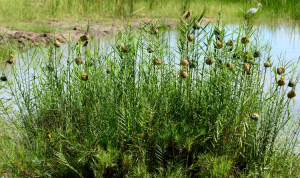 Vm 11500 |  Vm 9294 |
Thumb-nails of most recent PHOWN records - click on one to see its full record
See all PHOWN records for this species here.
PHOWN (Photos of Weaver Nests) provides valuable info on breeding distribution and colony sizes of weavers.
You can contribute by registering and submitting photos at Virtual Museum webpage.
4. Breeding distribution
Google map showing distribution (For species with small ranges you need to zoom in at the correct area to see the range):
yellow blob - range of weaver species; read more about this here.
![]() - PHOWN records with photos
- PHOWN records with photos
![]() - PHOWN records with no photos (Nest Record Cards, other records)
- PHOWN records with no photos (Nest Record Cards, other records)
![]() - Birdpix records
- Birdpix records
![]() - comments on out of range records, or interesting records
- comments on out of range records, or interesting records
![]() - type locality
- type locality
CLICK on the marker on the map to see individual record details.
5. Range changes
Not South African speciesThe above is based on Weaver Wednesday 3, a weekly series about range changes in South African weaver species.
This species text first appeared as
n/a







